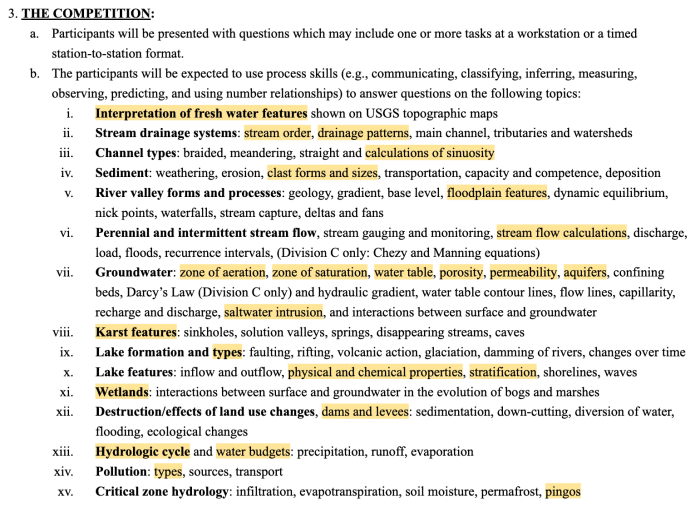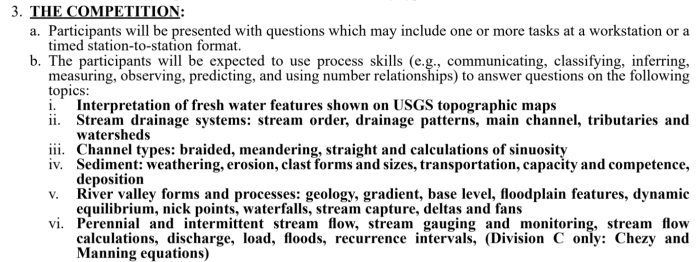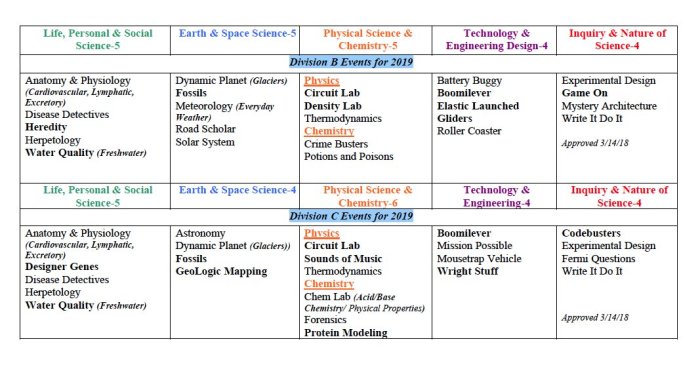Embark on a fascinating journey into the realm of geology with our comprehensive Science Olympiad Rocks and Minerals Cheat Sheet. This invaluable resource unlocks the secrets of Earth’s building blocks, empowering you to conquer any challenge that comes your way.
Delve into the intricacies of rock classification, unravel the mysteries of mineral properties, and witness the transformative power of the rock cycle. Discover the myriad applications of minerals in everyday life and explore the profound impact of rocks and minerals on our planet’s history and environment.
Types of Rocks: Science Olympiad Rocks And Minerals Cheat Sheet

Rocks are solid aggregates of minerals. They can be classified into three main types based on their mode of formation: igneous, sedimentary, and metamorphic.
Igneous Rocks
Igneous rocks are formed when molten rock (magma or lava) cools and solidifies. They are characterized by their interlocking crystals, which can be fine-grained or coarse-grained depending on the cooling rate.
Examples of igneous rocks include granite, basalt, and obsidian.
Sedimentary Rocks
Sedimentary rocks are formed when sediments (such as sand, mud, and organic matter) are deposited and compacted over time. They are characterized by their layered or bedded appearance.
Examples of sedimentary rocks include sandstone, limestone, and shale.
Metamorphic Rocks, Science olympiad rocks and minerals cheat sheet
Metamorphic rocks are formed when existing rocks are subjected to intense heat, pressure, or chemical alteration. They are characterized by their recrystallized or deformed texture.
Examples of metamorphic rocks include marble, slate, and gneiss.
| Feature | Igneous | Sedimentary | Metamorphic |
|---|---|---|---|
| Formation | Cooling and solidification of magma or lava | Deposition and compaction of sediments | Transformation of existing rocks due to heat, pressure, or chemical alteration |
| Texture | Interlocking crystals (fine-grained or coarse-grained) | Layered or bedded | Recrystallized or deformed |
| Common examples | Granite, basalt, obsidian | Sandstone, limestone, shale | Marble, slate, gneiss |
FAQs
What are the three main types of rocks?
Igneous, sedimentary, and metamorphic
How are minerals classified?
Based on their chemical composition and crystal structure
What is the rock cycle?
The process by which rocks transform from one type to another over time
Why are minerals important in everyday life?
They are used in a wide range of products, from electronics to construction materials
How do rocks and minerals shape the Earth’s surface?
They form mountains, valleys, and other landforms through processes such as erosion and weathering



